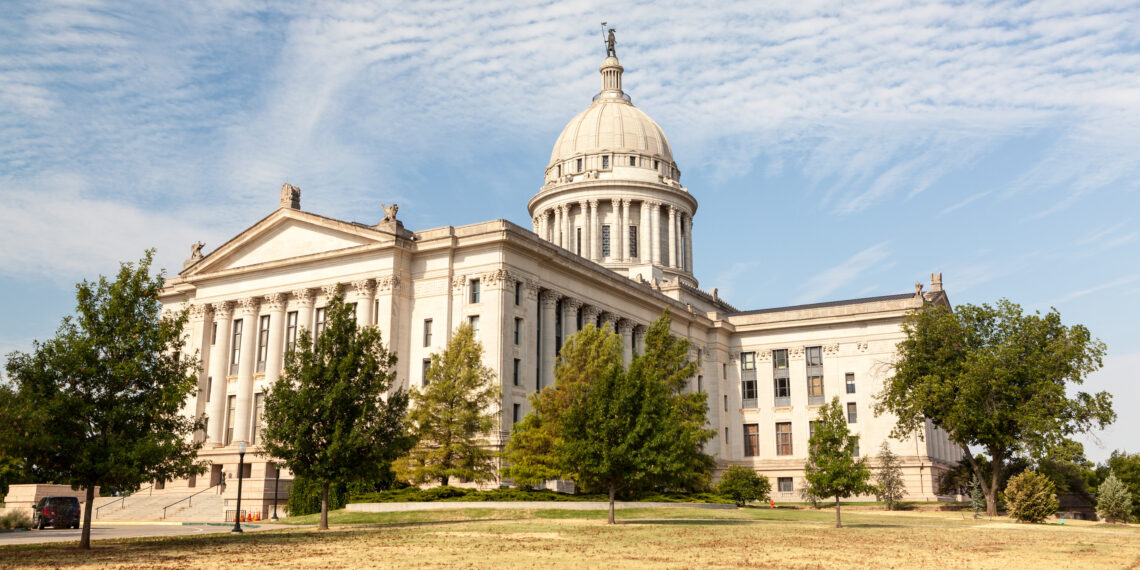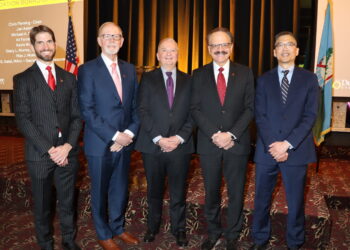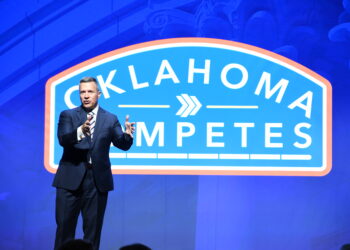OKLAHOMA CITY (OBV) – A plan to cut Oklahoma’s personal income tax and set it on a path to zero is on the cusp of being signed into state law.
The Oklahoma Legislature approved a plan that both reduces the income tax rate and streamlines the state’s tax code.
House Bill 2764, written by Rep. Trey Caldwell, R-Faxon, and Sen. Chuck Hall, R-Perry, cuts the top marginal personal income tax rate from 4.75 percent to 4.5 percent and restructures the state’s six income tax brackets into three on taxable income.
“This tax modernization plan represents common-sense changes that help level the playing field for all Oklahomans,” Senate President Pro Tempore Lonnie Paxton, R-Tuttle, said. “By simplifying our tax code and providing a pathway to lower taxes, we’re making our state more competitive and attractive for businesses and families alike. Oklahoma has long been committed to fiscal responsibility, and this legislation allows us to continue that tradition while also creating a long-term vision for phasing out the personal income tax in a sustainable way. The trigger mechanism ensures that tax relief is tied to real revenue growth, not guesswork or gimmicks, and that we protect vital services even as we work to return more money to taxpayers. I appreciate our House colleagues for their work and for the governor’s input on this plan.”
HB 2764 has a forward-looking trigger mechanism that reduces the rate by 0.25 percent increments when revenue benchmarks are met, as certified by the State Board of Equalization, potentially phasing out the personal income tax completely.
The bill also includes a safeguard that automatically cancels any pending reduction to protect core government services if a revenue failure is declared.
“This legislation is the result of thoughtful collaboration and a shared vision for Oklahoma’s future,” House Speaker Kyle Hilbert, R-Bristow, said. “By reducing the tax burden and streamlining our tax system, we’re fostering an environment that encourages growth and prosperity for all citizens. House Bill 2764 is more than just a tax cut. It’s a comprehensive plan that rewards economic growth, simplifies the tax process, and puts Oklahoma on a path to long-term competitiveness. We’ve built in conservative guardrails to ensure these cuts are fiscally responsible, while giving our economy the freedom to grow. I’m proud of the House and Senate for coming together to get this done for the people of Oklahoma.”
Stitt and legislative leaders gathered in the State Capitol’s Blue Room last week to announce a budget with numerous touted reforms, including the .25 percent income tax cut, as well as tort reform initiatives.
“I’ve been here all session and all my years in Oklahoma talking about making Oklahoma a top 10 state,” Stitt said. “Getting us on the path to zero [income tax], we’ve come up with a plan for that.”

The governor said he hoped to consolidate the state’s six brackets into one flat rate, but that the chosen plan is a responsible one.
The agreed upon income tax plan strengthens Oklahoma’s business community over the long term. The tax cut will grow the economy by making Oklahoma more competitive, according to Stitt.
“The path is a big signal to the business community. As the revenue grows, let’s invest that back into the business community,” Stitt said. “I think that’s a responsible way. As you have additional revenue, we’re going to give some of that back to the tax payer.”
Hilbert touted the united effort that went into putting the budget together, saying that disagreeing without being disagreeable went towards putting together a budget that everyone at the table could get behind.
“This is a budget to be proud of. We are still sitting on $3.5 billion in savings,” he said. “That is a great place to be as we prepare for the future.”
Cutting Oklahoma’s income tax rate has been Stitt’s top priority. He announced his “Half and a Path” plan during his State of the State address in early February. He described the plan as a half a point income tax reduction from the current 4.75 percent rate to a 4.25 percent rate. He said it’s an action that will start a path towards zero income tax in Oklahoma.
“I like to remind the naysayers when we cut taxes, the money doesn’t disappear, it stays in Oklahomans’ pockets and gets reinvested in our economy,” he said earlier this year.
Stitt reiterated his want for an income tax cut during a recent news conference, saying Oklahoma is in an economically viable position to cut the income tax.
He emphasized the state’s $11.24 billion in income from all revenue sources and $11.17 billion in expenses for 2026. He then touted Oklahoma’s $4.6 billion in savings.
Oklahoma’s individual income tax system has six income tax brackets ranging from 0.5 percent to 4.75 percent for top earners. The 4.75 percent rate kicks in at a $7,000 annual income. The state also has a 4.0 percent corporate income tax rate.
All Oklahomans and more than 95 percent of businesses in the state pay the individual income tax. The income tax’s standard deduction is $6,350 for single filers and $12,200 for joint filers.
Stitt has repeatedly pushed for income tax cuts. He called two special sessions in 2023 – one in September and one before the start of the 59th Legislature – hoping that the legislature would move an income tax cut initiative forward.
However, former Pro Tem Greg Treat stymied Stitt’s income tax hopes, adjourning the Senate on the first day of both special sessions. He said both times that it would be irresponsible to pass tax cuts before knowing how much authorized funds the legislature would have.
Stitt, Treat and former House Speaker Charles McCall worked together to cut the grocery tax in February 2024, but Treat did not budge on his opposition to cutting the income tax.
Paxton sat down with Oklahoma Business Voice for a one-on-one interview and said that reducing the income tax is a top priority for the 2025 legislative session.

















